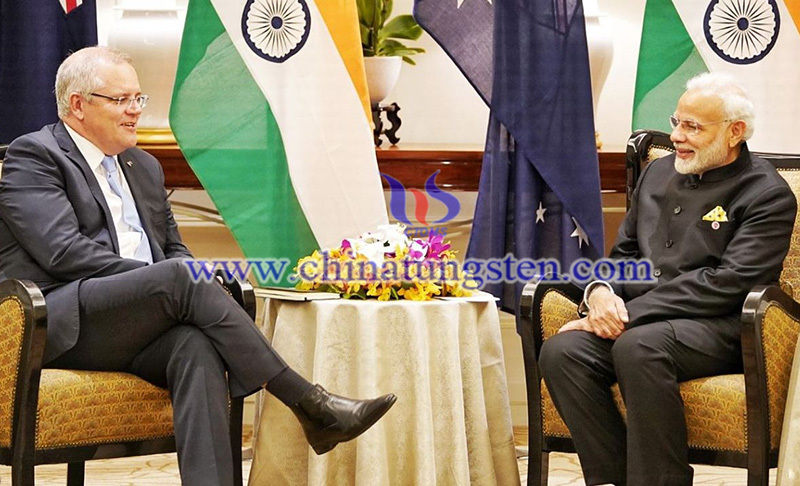Rare Earths: New Chapter in India and Australia Strategic Partnership
- Details
- Category: Tungsten's News
- Published on Saturday, 31 October 2020 11:39
Including rare earths, India, and Australia to build key technology alliances. Since 2000, the two countries have significantly improved their strategic coordination, military interoperability, and maritime cooperation. Australia has accepted Indian invitation again after 13 years and decided to return to the "Malabar" maritime military exercise to be jointly held by the United States, Japan, and India in November.
The Observer Research Foundation of India-Australian Institute for Strategic Policy recently jointly released a research report "Key Technologies and Indo-Pacific: A New India-Australia Partnership", suggesting that the cooperate to control key technologies and establish key technology alliances to deal with the challenges brought by the rise of China.
This research report, co-authored by five Indian and Australian think tank researchers, is full of "tinted glasses": they do not believe that China will rise in a win-win manner with India-Australia cooperation, and they are also very concerned about relying solely on the United States to maintain. The Indo-Pacific regional order lacks confidence and believes that the two countries have their own strengths and should strengthen cooperation, complement each other's advantages, and form a trend of checks and balances against China.

The report advocates that India and Australia should control key technologies in their own hands by strengthening cooperation, and reduce the risks that China’s monopoly of key technologies will bring to the two countries.
It outlines ambitious goals for India-Australia cooperation in 5G technology, artificial intelligence, quantum technology, space technology, important minerals, and rare earths. Including the establishment of the Indo-Pacific Technology Fund to promote scientific research and business cooperation in the region, and gradually bring in Japan, South Korea, and other Southeast Asian countries.
This report reflects, to a large extent, the direction of future scientific and technological cooperation between the two countries. It should be noted that although this is only a "policy recommendation" from a think tank, it still reflects the tip of the iceberg of domestic China-related issues in the two countries.
As a neighbor of China, there are always had territorial disputes, and their influence over China is also full of anxiety. In recent years, in the context of the Trump administration's continuous win over India to build a "quartet alliance" to contain China, the Modi government has no intention of letting the "non-alignment" policy tie its hands and feet and miss the opportunity to realize the dream of great power.
Rare earth elements’ is a term applied to 17 metals used in the production of electronics. The market for rare earth elements is worth around $24.3 billion annually and Australia can increase its share in that. And amid Australia-China in the recent months since the outbreak of COVID-19, Canberra is eying India as a key market for rare earths.
Both India and Australia seek to reduce their dependence on China in the economic and technological fields. Strategic relations on 5G technology, artificial intelligence, and rare earths would benefit to some degree from a deepening of other aspects of the relationship. This will extend quite naturally to people-to-people ties, particularly given the burgeoning population of Australians of Indian origin. In an era of strategic decoupling, the commercial and security relationship between any two countries will become increasingly important.
- Rare Earth Manufacturer & Supplier, Chinatungsten Online: www.chinatungsten.com
- Tungsten News & Prices of China Tungsten Industry Association: www.ctia.com.cn
- Molybdenum News & Price: news.molybdenum.com.cn
- Tel.: 86 592 5129696; Fax: 86 592 5129797; Email: sales@chinatungsten.com



 sales@chinatungsten.com
sales@chinatungsten.com